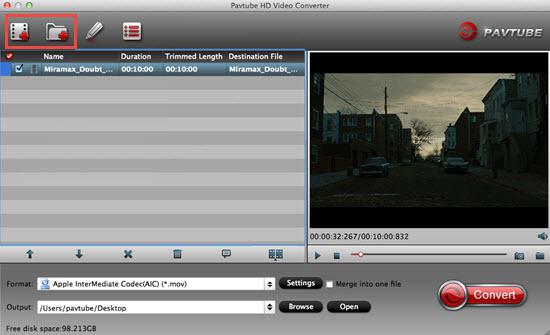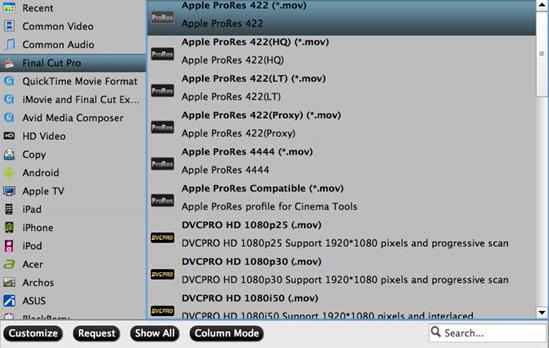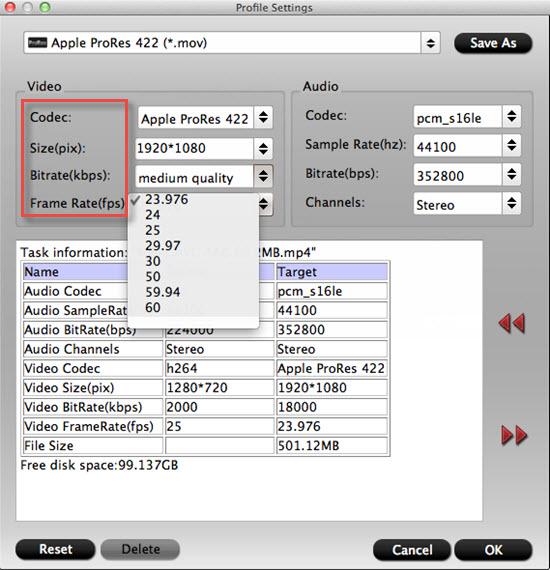The Difference Between H.264 QuickTime and a ProRes QuickTime File
Think of the QuickTime .mov file as a container. This container can contain various audio and video codecs. H.264 and ProRes 422 are both video codecs that can be used in a QuickTime Container.
H.264 is a "group of pictures" compression scheme, which achieves compression by starting with one full frame, and then for the next 24 or so frames, it uses partial frames that attempt to capture what has changed since the full frame. These partial frames will have information like direction of motion, and what has changed from the previous frame.
To give an example, let's say you have a video clip of a duck flying across the sky. The i-frame is a complete "photo" of the scene. It is compressed, much like a JPEG photo is compressed, but it stands alone. The next few frames will have heavily compressed information like "the background is moving left to right at this rate", "the duck is flying right to left", "the duck's wings are going up and down", and everything else stays the same. Then in 24 frames, you do it again.
ProRes 422 is still somewhat compressed, but each frame stands on its own. It is not dependent on the other frames around it.
This is much better for editing, because if you edit out the full i-frame in a group of pictures, you make the next 24 frames worthless. You can overcome this by converting to full frames as you are editing, but this takes a much more powerful processor and more memory. So the standard practice is to convert everything to full frames on import.
This means that Pro Res can be 10 times (or more) larger than h.264
(It is not 24 times larger, because the partial frames in GOP compression still take up some room.)
Pro Res 422 is mainly used for editing. You can correct color, add titles and effects, etc. without losing the quality of the clips.
H.264 is used mainly as a delivery codec. Once editing is finished, you might create an h.264 copy so you can play the file on an iPhone or send to YouTube.
H.264 is also used in some video cameras as a way to capture HD footage in a format that will fit on an SDHC card. AVCHD, which is similar to h.264, is also used in cameras.
Why don’t we choose H.264 for editing in FCP?
Do not edit h.264 in FCP...it is not an editing codec. It might work for a few shots, but as you add more and more, the processors get taxed more and more and things slow down, and eventually things are unworkable.
In large measure, H.264 codec isn't one of the easy setups in FCP, it isn't an editing codec.
In fact, H.264 is highly compressed, it is possible to use H.264 in Final Cut Pro sometimes, but don't expect it to result in top quality. For natively editing H.264 MP4 files in Final Cut Pro, you need to convert MP4 to a more editing-friendly format, such a Final Cut Pro's ProRes.
Hot Search: XAVC/AVCHD to FCP | MXF to FCP | AVCHD M2TS to FCP
To do the H.264 to Prores Conversion, as well as to keep your video quality, you need a professional HD Video Converter for Mac. If you want to find an easy-to use and professional tools, here recommend you Pavtube HD Video Converter for Mac(read the review). The one used here can meet your demands with its simple interface but rich functions. With it, you can effortlessly transcode H.264 QuickTime files to ProRes 422 encoded MOV for Final Cut Pro.
Meanwhile, the HD Video Converter can create files compatible with various non-linear editing systems like Avid, FCE, iMovie, and Adobe Premiere (Pro) etc. The HD converter also works on MacBook, MacBook Pro, MacBook Air, iMac running Mac OS X Snow Leopard, Lion, Mountain Lion, Mavericks, Yosemite and El Capitan etc. Just download it and follow the guide and go on your movie director experience.


Other Download:
- Pavtube old official address: http://www.pavtube.com/hd-video-converter-mac/
- AppStore Download: https://itunes.apple.com/de/app/pavtube-hd-video-converter/id502792488?mt=12
- Amazon Download: http://www.amazon.com/Pavtube-Video-Converter-Mac-Download/dp/B00QI9GNZS
- Cnet Download: http://download.cnet.com/Pavtube-HD-Video-Converter/3000-2194_4-76177786.html
Step 1: Add H.264 QuickTime footage or video clips to HD converter for FCP. You can directly drag and drop video files to this software.

Step 2: Select to rewrap your H.264 files to "Apple Prores 422(*.mov)" or "Apple Prores 422(HQ)(*.mov)" for natively editing with FCP.

Tips: You can click on Settings to adjust audio and video parameters including video size, video frame rate, bitrate, sample rate, audio channel.

Step 3: Hit "Convert" button to carry out the conversion process. When the conversion ends, you can run the Final Cut Pro and click File --> Import --> Files to import the converted Apple Prores files and natively edit them in FCP easily, if you are a newer of FCP you can follow this import video to fcp guide.
Read More: